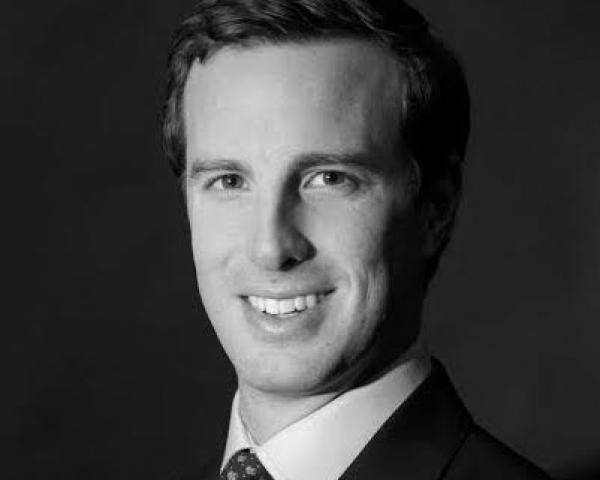In our earlier post on
Analytics and AI, we pointed to the growing volume and exploitation of (big) data at every point in the insurance value chain. But where is all of this data coming from? The old data sources and data-gathering methods have not gone away, but they cannot on their own explain the continuing boom in the data-analytics industry. The critical factor is the recent mass proliferation of sensors in the real world, capturing data on millions of connected objects, from toothbrushes to oil tankers. The Internet of Things (IoT) has arrived, and insurers are taking notice.
The possibilities of the IoT for insurance are boundless, from turbocharging underwriting models and using sensor data for preventative messaging to usage-based products and dynamic pricing. In this installment, we explore:
- where IoT technologies stand to produce the greatest benefit, both across the insurance lifecycle and across different insurance lines
- new IoT-enabled models like usage-based insurance (UBI) and insurance-as-a-service
- IoT platform implementation across different insurance lines and regions
Our stats and perspectives derive from the extensive survey we conducted as part of our Global Trend Map; a full breakdown of our respondents, and details of our methodology, are available as part of
the full Trend Map, which you can download for free at any time.
"There is a big shift from today’s protection to tomorrow’s prevention. New technologies using sensors and devices are becoming more widespread and can prevent incidents from happening. Broadly speaking from an industry perspective, it has potential for better risk understanding and creates happier customers." – Dennis Nilsson, assistant vice president, head of advanced analytics, insurance, at TD Insurance
While other technological advances often represent the optimization of an established insurer capability (as with many applications of analytics, for instance), IoT in theory enables insurers to rewrite the rules of the game by moving from risk protection to risk prevention. For many use cases, this remains hypothetical, and many questions around business/monetization models, as well as the precise role of insurers in the nascent IoT ecosystem, remain unanswered. However, IoT is, in one form or another, increasingly part of carriers' strategic horizons.
Do you have an IoT strategy?

54% of all respondents had an IoT strategy, and we see that this is fairly uniform across the ecosystem, insurers and brokers and agents scoring 49% apiece, and technology partners 65%. This solid showing by technology partners is not surprising – in many cases, insurers’ IoT platforms are being developed by third-party service providers. Given the upward trend in platform implementation, we expect that the proportion of insurers with formal IoT strategies will sharply rise in this timeframe, as well.
Assessing the Impact of IoT: Insurance Lifecycle
IoT is such an open-ended technology that we further asked our respondents to specify those areas of insurance they thought would benefit the most. The areas that come out on top were analytics (81%), customer-centricity (68%), pricing (64%), digital (61%), claims (60%) and underwriting (59%).

The clear lead for analytics is understandable given the symbiosis in which these two technologies stand. No IoT means limited data for analytical models; no analytics substantially weakens the business case for IoT.
"Drones, which are also IoT devices, are being used by property and casualty companies to examine property damage after catastrophes and storms, saving them a lot of time and money, so people don’t have to climb up on the roofs, which is dangerous and time-consuming." – Stephen Applebaum, managing partner at Insurance Solutions Group
Before checking out the impact of IoT on different insurance lines, let's now explore some of these key IoT beneficiaries in a bit more depth and observe how they mesh as part of today’s emerging UBI model: analytics, customer-centricity, pricing, digital, claims and underwriting.
See also: Insurance and the Internet of Things
IoT does not affect all these areas separately; rather, they are all co-beneficiaries of the paradigm that IoT enables, in which the underwriting and claims components of the insurance lifecycle are increasingly fused.
On the one hand, the massive volume of data being generated by connected devices is feeding analytics and algorithmic models, increasing carriers’ understanding of risk and the accuracy of underwriting models. On the other, this data is not a static mountain; it is accessible in real time. This means that underwriting models can be continuously updated by way of dynamic pricing.
This new model, often called UBI, means that policyholders can be judged on their actual behavior – which they can feel motivated to change – instead of being subjected to the tyranny of averages. So instead of charging high premiums for bad risk and then being hit with the claims bill, insurers can offer incentives for less risky behavior on the part of their policyholders through the prospect of lower premium prices (or benefits in kind) and thereby reduce their claims burden. This model is established in the auto line – with help from in-car telematics – as pay-how-you-drive, and we have also seen similar innovations in health, in particular Discovery Health's Vitality Program.
"Technology used well can change the current customer proposition. The traditional insurance model has the opportunity to move from post-loss reactive reimbursement to proactively managing down customers' risks. The latter model is significantly more valuable to the customer and can change insurance from the grudge transaction that many view it as today into an ongoing value-enhancing relationship. Incumbents working with insurtech startups can accelerate this evolution" – Nick Martin, fund manager at Polar Capital Global Insurance Fund
IoT does not just enable insurers to tailor policies to actual behavior; it also allows insurance-as-a-service, with flexible policy spans. Rather than taking out an annual policy, which may overshoot the mark, customers can take out insurance in real time on a case-by-case basis, precisely when they need it the most. In the auto world, this has crystallized as pay-as-you-drive,
but the applications are potentially much broader, for example insuring your car against theft for the duration of a trip into town or your airport luggage against loss at the point of check-in.
In the longer term, the ability to sustainably offer lower premiums – which relies on reducing claims costs or premium spans – opens up to carriers segments of the customer base that were hitherto under- or un-insured, expanding the scale at which they can operate.
As we have indicated, IoT innovation can be particularly significant for claims departments, and this is not just by reducing payouts but also by allowing insurers to work out exactly what has happened when a claim event does occur (for instance, with car crashes). To further investigate the impact of IoT on claims, we spoke to Minh Q Tran, general partner at AXA Strategic Ventures:
"IoT could have a huge impact on claims by preventing accidents from happening or warning so that the damage doesn’t get worse.
"In the car industry, the development of connected and autonomous cars should prevent accidents and decrease dramatically linked damages, changing at the same time insurance intervention. Car insurance startups are using auto-tracking devices to teach newer drivers how to stay safe (Marmalade Insurance) and help locate cars if they are stolen (Insure The Box).
"Many insurtechs are being created to more accurately analyze drivers’ attitudes and data, so that insurers can adapt their offer to customers and new ways of driving."
Stay tuned for our dedicated post on claims, in which we explore further the impact of IoT on claims departments. Or, if you'd prefer to read on immediately and access all 11 key themes, simply
download the full Trend Map free of charge here.
However, if it is to be successful, insurance IoT requires more than just devices and back-end analytics: Insurers also need to radically reevaluate the relationship with the customer. In the past, policies were renewed infrequently (in many cases as rarely as once a year); the behavioral science inherent in IoT-empowered models requires more frequent interactions and a larger number of (digital) touchpoints.
Insurance needs to change its perception in the eyes of consumers if it is going to gain firstly their trust and secondly their data, by becoming fundamentally more customer-centric and making its value proposition clearer (we go into these themes in more detail in our later installments on marketing and customer-centricity and distribution – read ahead
here). We can see then that IoT is not, and cannot be, a siloed technology for the new-age insurer; it directly affects, and is affected by, all work being done in analytics, customer-centricity, pricing, digital, underwriting and claims.
Assessing the Impact of IoT: Insurance Lines
We didn’t just ask respondents to indicate which aspects of insurance they saw benefiting the most but also which insurance lines. Auto, home and health came out on top, while P&C/general, commercial and life were relatively behind.
"Technology is having an impact. In the P&C space, we are seeing a real focus on IoT and how devices can give better information and be part of an insurance program. Wearables are going to make even more inroads into health and wellness products." – Cindy Forbes, EVP and chief analytics officer, Manulife Financial
The new UBI model enabled by IoT has clear implications for our three leading lines (and for personal lines, in general). In health, we can point to connected wearables to monitor an individual’s health and to price accordingly; in auto, to in-car telematics that monitor driving behavior; and in home, to smart security devices. We see a whole host of commercialized solutions in these areas already.
We asked Sam Evans, managing director at Eos Venture Partners, for some more detail on the impact of IoT in home insurance:
"There are a multitude of applications ranging across motor, home and health. One key application where we have seen significant progress in insurance is combining smart home technology with a traditional home insurance policy.
"There are multiple benefits for both the insurer and the policyholder. The technology, including smart cameras, motion sensors and water-leak devices, has the potential to significantly reduce claims experience by providing early warning and notification. As an example: In the U.K., where the largest cause of damage is water leakage, a device that allows the water to be shut off when a leak is detected will therefore significantly reduce claims costs and ensure a happy homeowner.
"One of the leaders in this area is a U.K. insurtech called Neos, which is pioneering the move to preventative home insurance leveraging the latest IoT devices."

As we see in the graph above, there is a substantial gap between our leaders, auto (80%), home (71%) and health (64%), and our stragglers, P&C/general (44%), commercial (33%) and life (29%). However, the current primacy of the personal lines should in no way blind us to the potential of IoT for commercial lines, which, despite not attracting quite the same media attention to date, remains huge.
See also: Coverage Risks From the ‘Internet of Things’
IoT can transform the insurance proposition attaching to any kind of valuable commercial asset – provided that it can be monitored. For example, opening up data streams from industrial equipment for algorithmic modeling enables preventative maintenance, reducing the burden of failure for both equipment owners and insurers alike, and the same applies to sensitive cargoes in transit. As with UBI for the personal lines, the carrier is transformed from insurer to assurer:
"Connected insurance is a big opportunity in commercial insurance, but it won’t come overnight. It’s the less mature use case today because it’s more difficult to figure out the commercial or industrial process, how to put sensors on that process and how to get at the data. But the opportunity to change the product’s structure, the paradigm you are using to insure that kind of risk, is really large; it’s impressive." – Matteo Carbone, founder and director at Connected Insurance Observatory
Our stats on implementation (which we examine below) show that commercial & P&C/general currently exhibit a lower level of platform implementation than our other lines. However, in line with the strong all-round potential we have indicated here, we find minimal difference between our different lines when we look forward to anticipated levels of implementation in the near future.
IoT Adoption by Region
It is one thing to establish in which lines and areas of insurance the potential impact of IoT is greatest – but where are we on the adoption curve?

22% of all concerned parties have already implemented IoT platforms; within 12 months, this is set to rise to 47%; and within 24 months we will be at 72% implementation. What this tells us is that we are in the midst of an IoT rush, which will see it become a majority-practical phenomenon within two years for those players today still predominantly at the theoretical stage.
Regionally, we detected a relative lead in implementation for Europe versus the rest of the world, with 30% of respondents having already implemented. However, the scores for these two groups quickly align, as we can see above. You can read more about our notion of Europe as an early adopter in our dedicated Regional Profile, by downloading the full Trend Map below
here.
Stay tuned for our next post, in which we look at that all-important field, especially for the success of IoT products:
Marketing & Customer-Centricity.


































